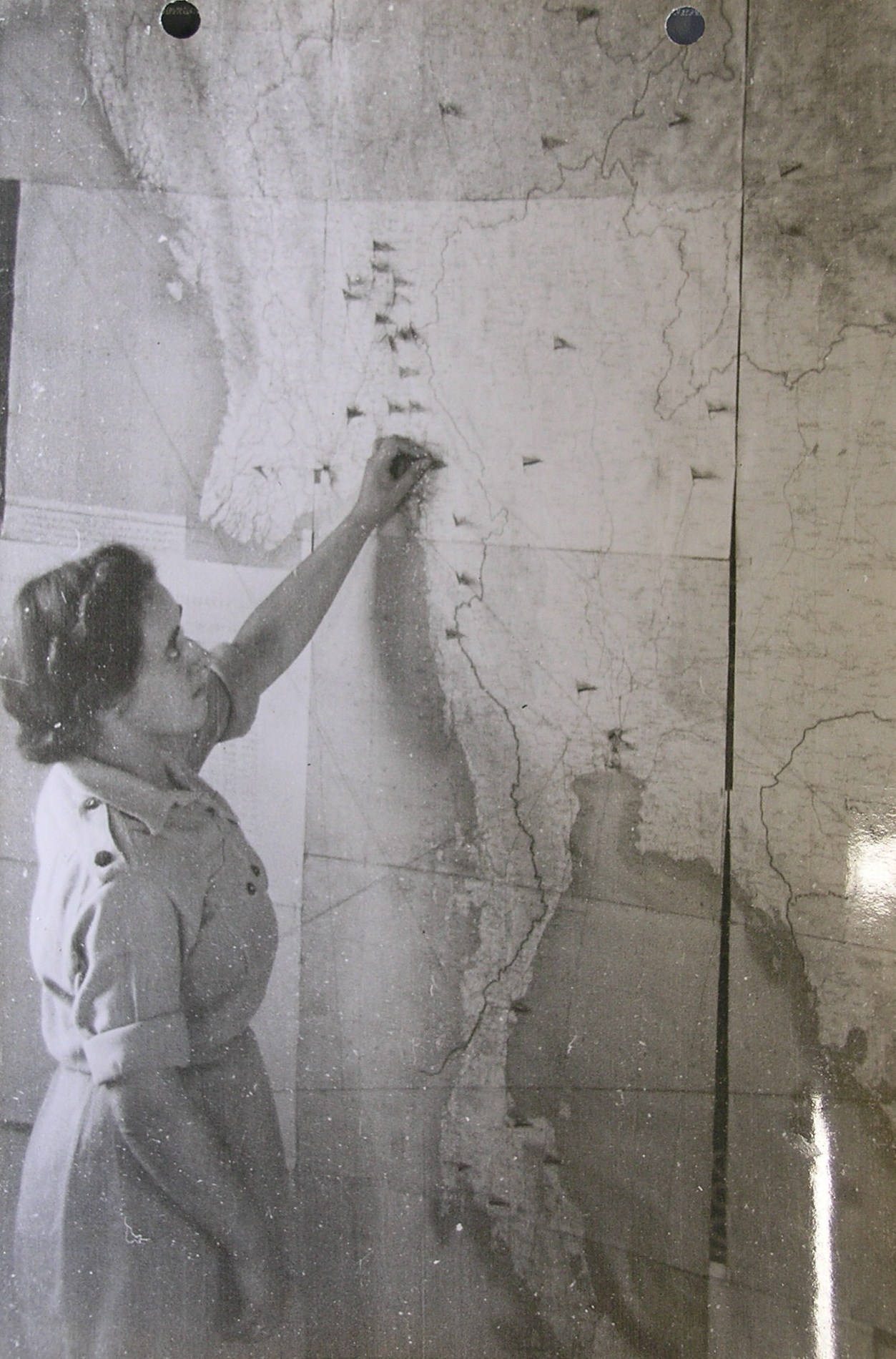When we commemorate the world wars, and wars since, we obviously think about those who lost their lives, and we remember and thank those who were ‘at the sharp end’. For example, it is often said that we remember ‘The Few’ of the Battle of Britain, the fighter pilots, but not so much those who had the critical job of keeping the aircraft flying, without whom ‘The Few’ would never have prevailed.
For the men of Force 136, hundreds of miles behind the lines in Burma, or Malaya, or Siam, survival depended upon their W/T equipment and the signals infrastructure developed in support of their operations.
By VJ Day, in Burma alone, SOE had somewhere in the region of 50 operational W/T stations in the field. The complexity of managing SOE communications is captured to some extent in this preamble to ‘The Development of SOE Signal Planning’:
The organising of SOE signals is always complicated by the extreme variations in circumstances that must be allowed for, since outstations vary from securely placed sets at sub-headquarters to secretly camoflaged sets in an enemy controlled city. Traffic may vary from the completely unimportant to last-minute details of a supplies dropping operation or reports of enemy movements behind a fluid fighting front, even the home station resources may vary from the “more than adequate now” to the “woefully inadequate” in three months time.
The report then goes on to make clear that ‘[s]upreme success’ and ‘peaks of success’ of SOE operations depended upon the skill of the home station and out station operators.
Of course, survival and success depended upon more than only signals infrastructure, planning, procedure, and the skill of these operators. What follows, however, should give some idea of the scale of just this one aspect of service and support, and prompt us to consider the commemoration of all service personnel who made Victory over Japan possible in August 1945.
The photos below are all from the transmitting and receiving station in Calcutta:


This site contained the following RCA 250-350w transmitters:
The equipment needed maintaining as well as operating. The second photo shows three RCA transmitters in the ‘[c]orner of workshop’ for an overhaul:
Some chaps maintaining a Hallicrafter transmitter:

This next photo shows ‘Operator tuning Hallicrafter 450w. transmitter’, with socks rolled down comfortably:

More relaxed dress code for these operators of 5kw RCA broadcast transmitters:

Next is the receiver station control room:

Another of the same room:

It wasn’t all men; the women of the First Aid Nursing Yeomanry also had a hugely significant role:
The photo on the right is from the receiver station with a FANY working the teleprinter to HQ.

Map showing Burma, Siam and Malaya with flags representing W/T sets in the field.
RCA mobiles and men’s nisson huts.
Unfortunately, none of the people photographed have been named, but their service is acknowledged.
It is worth remembering that men and women such as these, although not fighting, did sometimes make the ultimate sacrifice. Accidents such as car or plane crashes, explosions of munitions storage depots such as at Jubblepore, suicide, malaria, and indeed murder, did claim lives of these ‘rear echelon’ personnel. One FANY cipher clerk who volunteered for service in India was killed in her room, and the murderer was never found. You can read about Betty Parker HERE.
If you like what you see on my website consider clicking HERE, or buying my book HERE

Like what you see?
Consider a small donation to keep the website going?
£1.00









August 14, 2020 at 10:37 am
It would be of much interest to see photos and acknowledgment of personnel from Commonwealth countries involved in the war effort.
Please don’t continue with text book type presentation of battle achievements by white British only.
Please support Commonwealth war veterans, some are still alive.
LikeLike
August 15, 2020 at 7:37 pm
Dear Ms Gaudoin,
Thank you for your message in which you express concern that Commonwealth personnel be remembered and commemorated.
I am sorry that you think that I have only written about the battle achievements of white British soldiers. May I invite you to look more closely at my research? In particular, you might find the following interesting:
Firstly, my page entitled ‘The Men of SOE Burma’, https://soeinburma.wordpress.com/the-men-of-soe-burma/ where I have provided photographs where they exist, and a biography, of:
– 2 Gurkhas
– 1 Kuki
– 1 Lahu
– 31 Shan-Burmans
– 2 Shan Kadu
– 1 Shan Palaung
– 7 Shan
– 1 Indo-Burman
– 106 Bamar
– 76 Karen
– 5 Indians
– 26 Chinese
– 95 Kachin
– 28 Chin
This post should give you some insight into how I have gone about researching the non-Caucasian personnel: https://soeinburma.wordpress.com/2020/04/26/finding-forgotten-allies/
In terms of individual posts, I have tried to write about as many different ethnicities as I could, that deployed in Burma with SOE.
Here’s one about a Burman secret agent: https://soeinburma.wordpress.com/2018/07/24/quick-shrewd-cunning-and-resourceful-a-panther-crossing-the-chindwin-1944/
Here’s one about a Kachin who won the BGM: https://soeinburma.wordpress.com/2018/04/07/the-burma-gallantry-medal-havildar-la-shi-naw/
Here’s one about a Chin: https://soeinburma.wordpress.com/2017/12/20/the-problem-with-charlie-a-chin-on-special-operations/
Here’s one about an Indian Doctor on Special Operations: https://soeinburma.wordpress.com/2017/10/14/a-doctor-on-special-operations/
I think that should be enough to get you going.
The article that you have commented on had a particular point, and that was to remember what was going on behind the front line. I had a file with some amazing pictures, and wanted people to remember those who served and made sacrifices, despite not being in combat. Since this post was not about battle achievements, I was further confused by your plea.
I hope that after a perusal of my work, you will agree that I am not focused only upon white British battle achievements.
Since you have asked me ‘don’t continue with text book type presentation of battle achievements by white British only’, perhaps you won’t mind me giving you a bit of advice? Be a bit more thoughtful before you message people, and make sure that what you have said is polite and accurate. Maybe ask a question – for example – you could have written to me asking if there was any information about Commonwealth personnel anywhere on my website, since there isn’t in this particular post. Of course, it is up to you how you approach people, but if there is one thing that I impress upon my daughter and my students regularly, it is to ‘be kind’.
It is in this spirit that I have replied to you.
Rich
LikeLike
August 11, 2021 at 9:56 pm
My RADAR was the Rebecca/Eureka system which allowed us to drop people, equipment and supplies with pinpoint accuracy to the Chindits and others operating behind the Jap lines.
LikeLike
August 11, 2021 at 9:58 pm
The first mobile phone? I just got a PF which is the man who did a lot of the work on S Phone / Eureka / Rebecca.
LikeLike